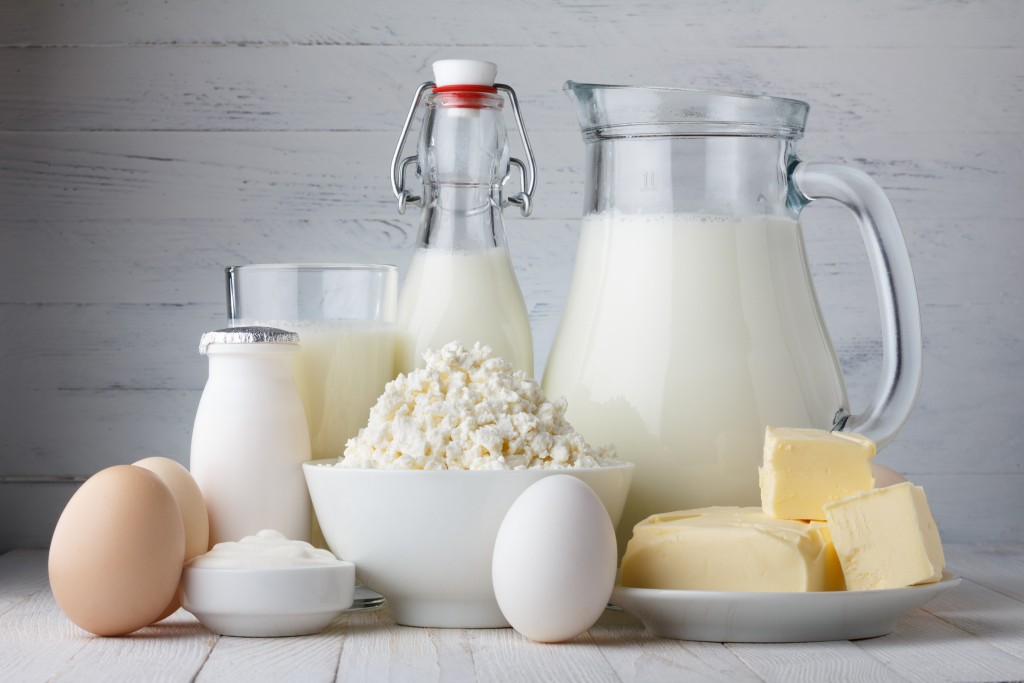 What is lactose?
What is lactose?
Lactose is the carbohydrate (or sugar) found in cow’s milk and present in most foods made from cow’s milk. Lactose is normally broken down in the small intestine by an enzyme called lactase.
 What is lactose intolerance?
What is lactose intolerance?
Lactose intolerance occurs when there is not enough lactase enzyme to digest the lactose. This causes lactose to pass into the large intestine where it is fermented by the bacteria which live there. This can result in bloating, abdominal pain, excessive wind and diarrhoea.
What causes lactose intolerance?
There are several forms of lactose intolerance. Some people produce less lactase than others, and lactase production can decrease as a person ages. This is more common in people of Asian, Middle Eastern, Southern European, African or Australian Aboriginal decent. Small quantities of lactose will not cause symptoms in most people, however, some people are born with no or very few lactase enzymes. These individuals are often very sensitive to lactose in the diet and need to follow a stricter lactose free diet.
Diagnosis of lactose intolerance
Previously, accurate diagnosis of lactose intolerance required invasive procedures such as endoscopy or multiple blood tests or restrictive elimination diets. However, lactose intolerance can now be diagnosed using Hydrogen Methane Testing (HMT), a simple, non-invasive breath test. Find more information about HMT here
The symptoms of lactose intolerance can be caused by a number of different conditions, so accurate diagnosis is important to make sure the symptoms are in fact due to lactose intolerance and not something else.
 Management of lactose intolerance
Management of lactose intolerance
Severity of lactose intolerance varies widely, and many lactose intolerant people do not need to avoid all milk and milk products. For some people, the small amount of milk in a cup of tea or coffee will not cause them any problems, however, the amount in a milkshake will. It is important that you experiment to determine your individual level of tolerance. Follow the advice of your doctor and dietitian who will recommend a lactose-reduced or lactose-free diet.
Lactase products that you add to milk to pre-digest the lactose for you are also available. Drops containing the enzyme lactase can be added to ordinary cow’s milk to digest most of the lactose. These can be purchased at pharmacies.
Ensuring adequate calcium intake
As dairy is an excellent dietary source of calcium, appropriate high calcium alternatives need to be consumed so to ensure calcium intake remains adequate. Soy milk and other soy products are a good alternative to milk products as they contain no lactose but usually have added calcium. Low-lactose and lactose free milks are also readily available. These have a similar calcium content to regular milk and can be used in it’s place.
Cheese and yoghurt are made from milk, however the lactose content is reduced during processing. Cheese is an excellent source of calcium, and only contains trace amounts of lactose. Yoghurt is also a rich source of calcium, and many people with lactose intolerance tolerate yoghurt because the natural bacteria in yoghurt digest some of the lactose.
Other issues
Always check the ingredients list on commercial foods. Milk solids, milk powder, non-fat or skim milk solids and whey or casein powder all contain lactose. It is likely that most people will however manage most foods with a little milk added even though they cannot tolerate a glass of milk. Lactate, lactic acid and lactalbumin do not contain lactose. Foods labelled “Milk Free” are suitable for a low lactose diet. Foods that state “may contain traces of milk” are safe.
Low lactose diet
 Avoid or limit:
Avoid or limit:
? Milk in large amounts
? Ice-cream and yoghurt in large amounts ?
Cream
?Evaporated and condensed milk
?Cottage and ricotta cheese.
Include:
?Low lactose milk (eg Liddels, Zymill)
?Low lactose yoghurt (eg Liddels, Vaalia)
?Soy yoghurt
?Soy ice-cream
?Hard cheese eg. cheddar, fetta
?Butter, margarine
?Milk as an ingredient in cakes, biscuits etc.
? Aim to include 2 to 3 low lactose dairy foods or alternatives per day.
